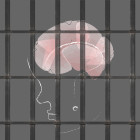
A Modern Understanding of a Long Ago Confession and a Boy’s Execution
|
A few miles off I-95, past acres of brown-and-white fields where blackbirds circle overhead, this small town in the heart of Deep South cotton country isn't known for much. It has a post office and a few churches, some abandoned houses and some nicer ones, ramshackle trailers and cotton fields. After church on a recent Sunday there, George Frierson was scuffing a shiny black dress shoe across some gravel at a railroad crossing. Back when he was a kid the rail line split this tiny, rural town along racial lines. But for blacks like him growing up in Alcolu, the train tracks signified something even more sinister than segregation.








